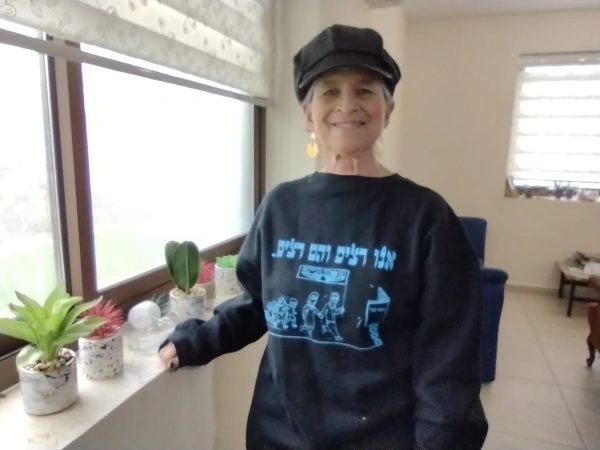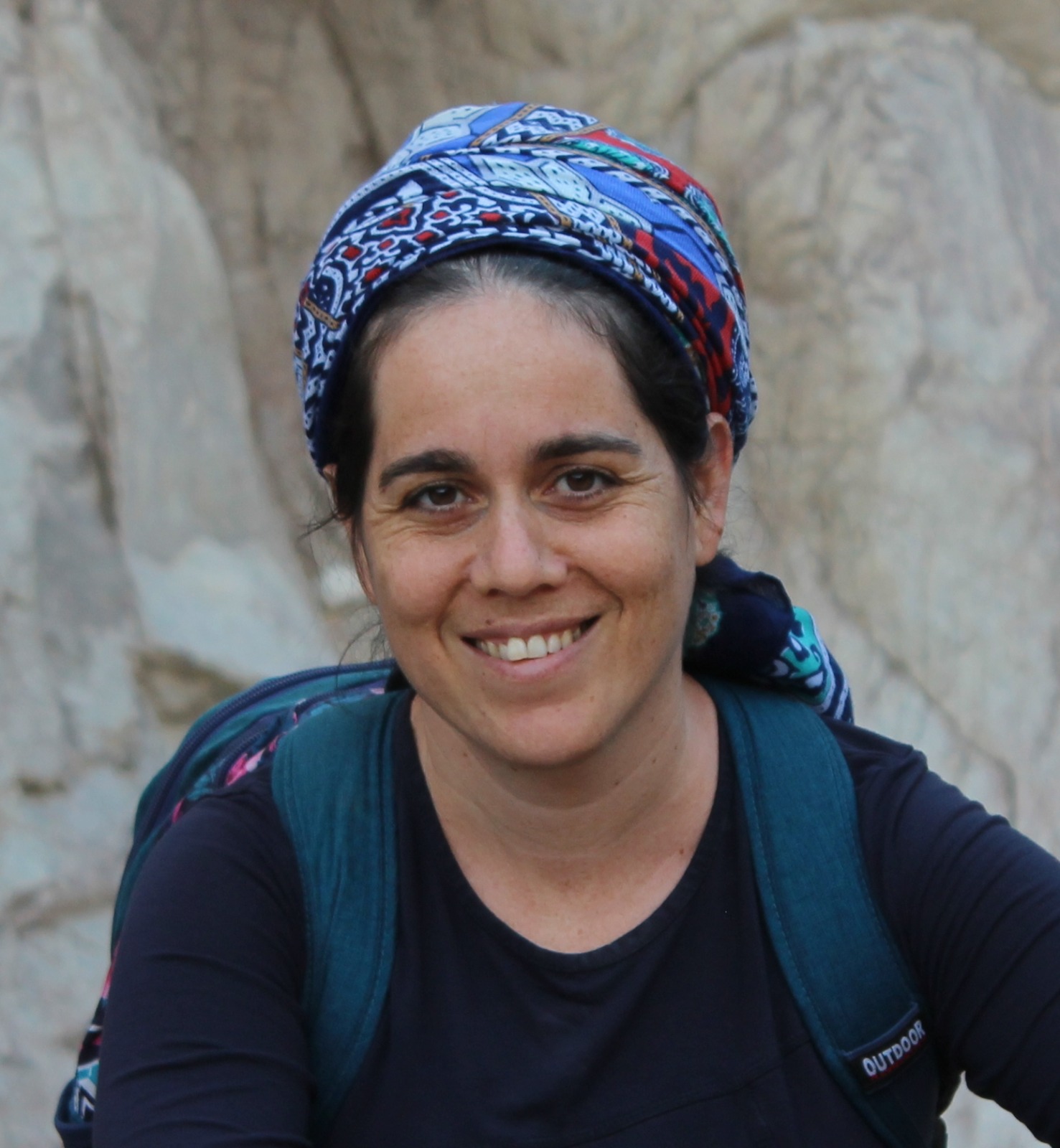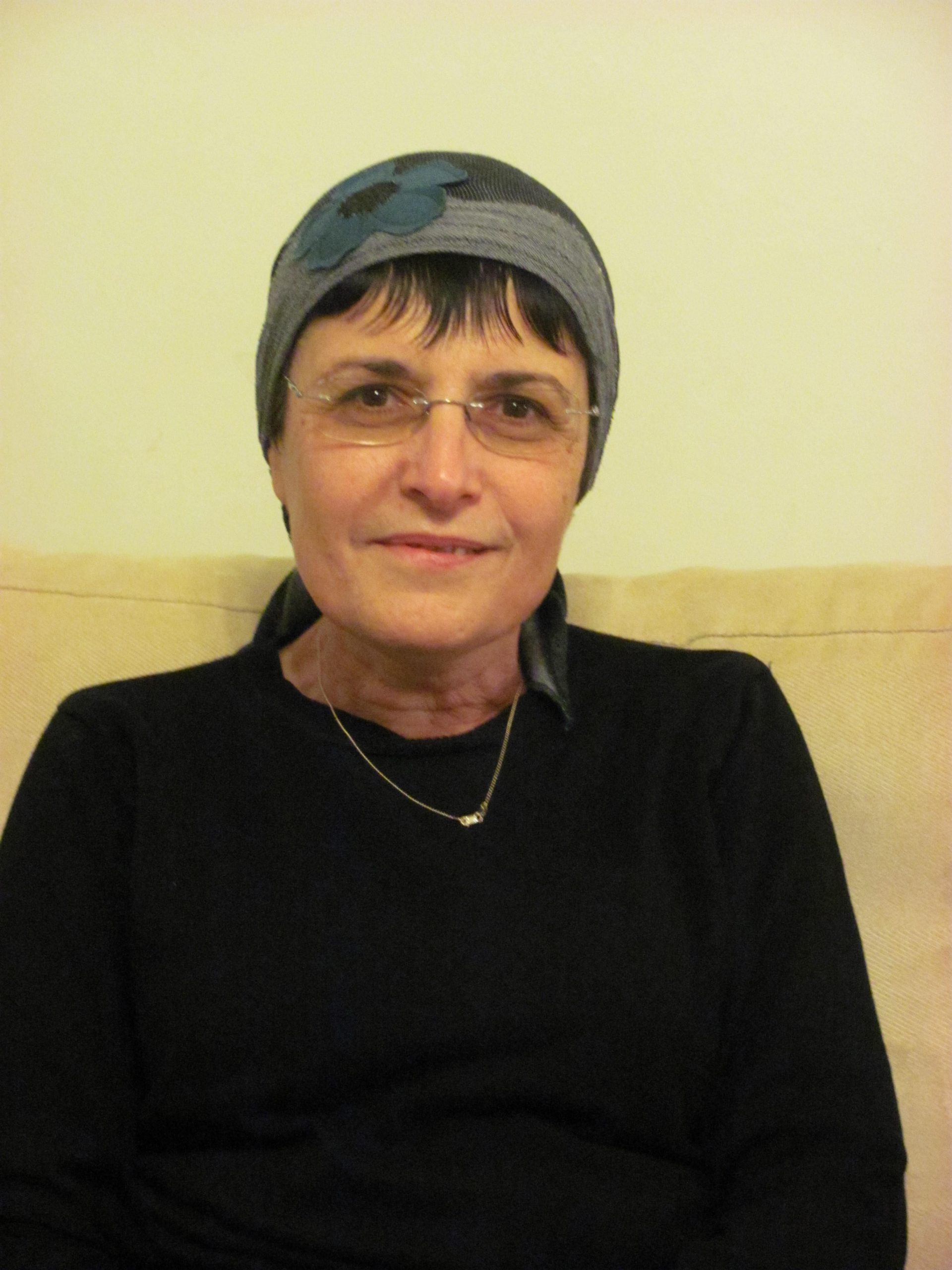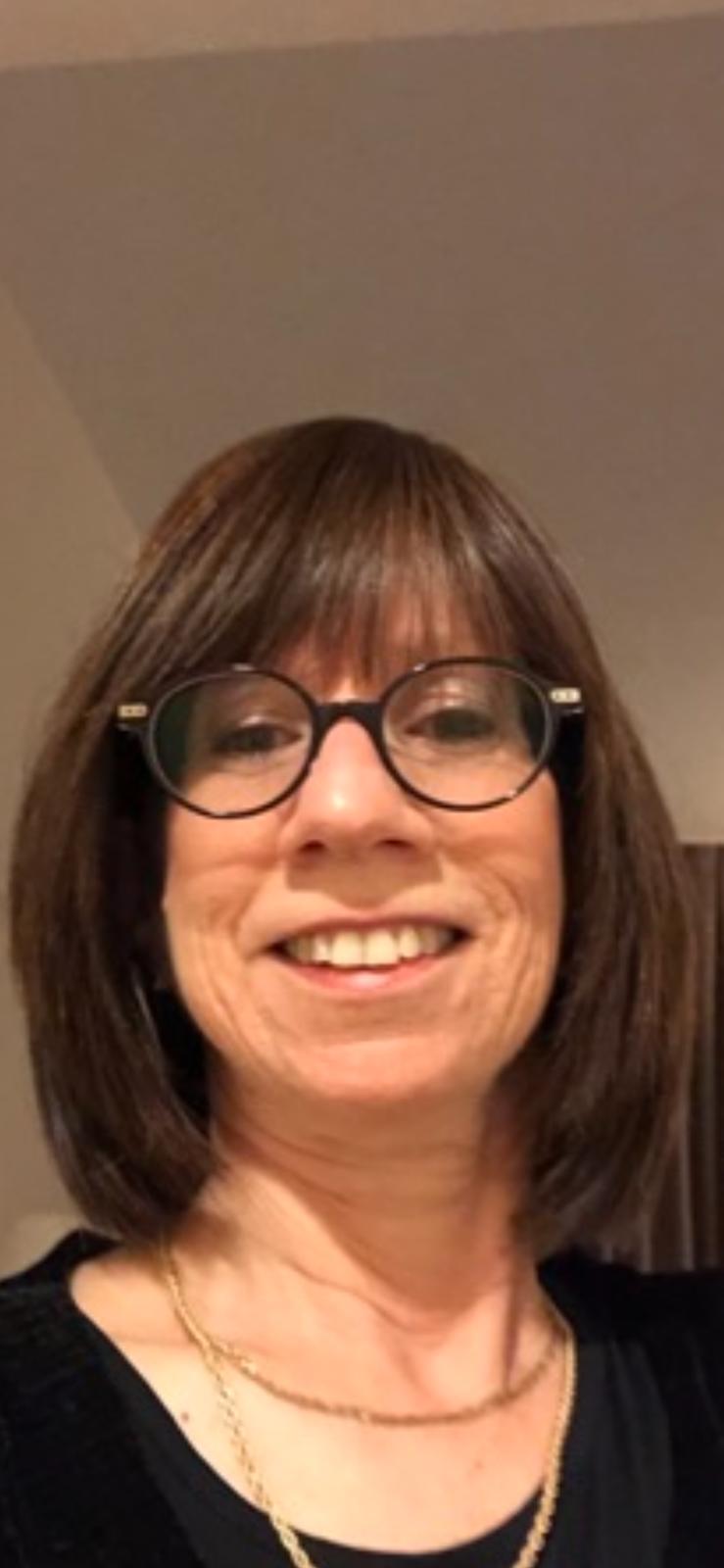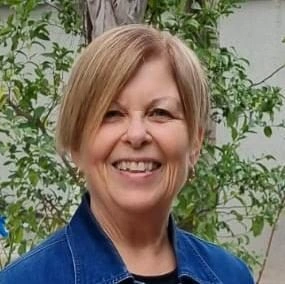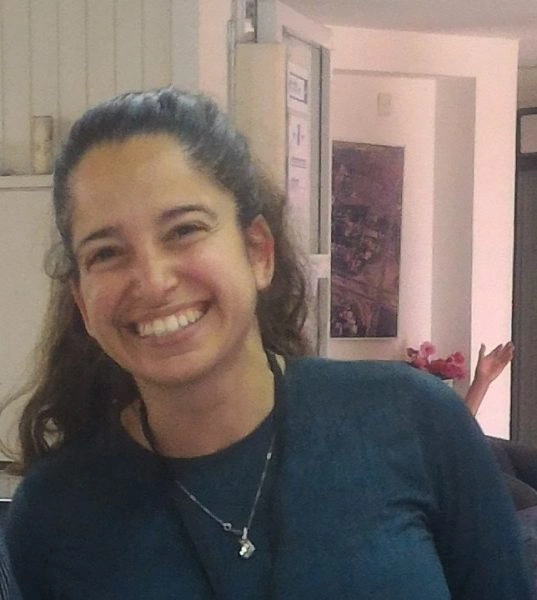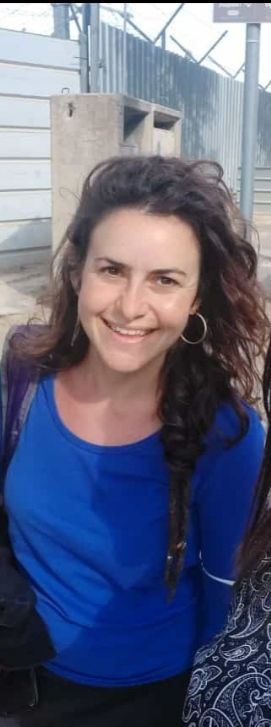השיעור מוקדש לזכרה של זיסל בת ישראל יצחק ז”ל עוד שאלות נשאלו לגבי המחלוקת האם ישנה לשחיטה מתחילה ועד סוף או אינה לשחיטה אלא לבסוף. עוד הלכה בקשר לשחיטה – אם מישהו שוחט בשניים או שלושה מקומות – האם פסול או כשר? כמה שאלות נשאלו בקשר לפסול חלדה – באיזה דרך נחשב/לא נחשב חלדה? האם שניים יכולים לשחוט ביחד? האם מדובר שסכין אחד או שני סכינים? אם חתך את הראש בבת אחד תוך כדי הולכת הסכין, האם כשר?
לימוד השבוע מוקדש ע”י טינה לם לע”נ יצחק מאיר בן הרב צבי אריה ואסתר בתיה.
רוצים להקדיש למידה? התחל כאן:
לימוד השבוע מוקדש ע”י טינה לם לע”נ יצחק מאיר בן הרב צבי אריה ואסתר בתיה.
העמקה
רוצה להבין מה באמת קורה מתחת לפני השטח של הסוגיה?
שיעורים, פודקאסטים והרחבות של מיטב המורות שלנו יפתחו לך עוד זוויות וכיווני חשיבה.
חדשה בלימוד הגמרא?
זה הדף הראשון שלך? איזו התרגשות עצומה! יש לנו בדיוק את התכנים והכלים שיעזרו לך לעשות את הצעדים הראשונים ללמידה בקצב וברמה שלך, כך תוכלי להרגיש בנוח גם בתוך הסוגיות המורכבות ומאתגרות.
פסיפס הלומדות שלנו
גלי את קהילת הלומדות שלנו, מגוון נשים, רקעים וסיפורים. כולן חלק מתנועה ומסע מרגש ועוצמתי.
חולין ל
סתימתאה אבל חכמים אומרים ב’ שוחטים זבח אחד
which is cited unattributed, i.e., it is one of his many opinions that are cited in the Mishna and baraitot without attribution. But the Rabbis say: Two people may slaughter one offering. According to the Rabbis, Rava’s difficulty remains: Let the mishna teach a case where they slaughtered it with two men, as the heifer does not render the first man who slaughters impure, as the slaughter did not yet begin, and the heifer renders the latter man impure.
ולרבי אלעזר ברבי שמעון נמי לפלוג כגון דשחט חד גברא בשני סודרים דסודר קמא לא מטמא וסודר בתרא מטמא אלא בפסולא דפרה קא מיירי בהכשרה לא קא מיירי
And according to the opinion of Rabbi Elazar, son of Rabbi Shimon, who holds that two people may not slaughter one offering, let the tanna of the mishna also distinguish and teach a case where one man slaughtered with two cloths on his head, starting the slaughter with one and replacing it with the other midway through the slaughter, as in that case, since halakhic slaughter is accomplished only at its conclusion, the first cloth is not rendered impure but the latter cloth is rendered impure. Rather, one must say that the tanna is speaking only in reference to cases involving the disqualification of the red heifer itself, but he is not speaking in reference to cases involving a fit red heifer, and no proof may be cited from here.
מתיב רב אידי בר אבין ובמועד לשמו פטור שלא לשמו חייב
Rav Idi bar Avin raises an objection from a mishna (Pesaḥim 63a) to the opinion that halakhic slaughter is accomplished only at its conclusion. If one slaughters an animal for the sake of the Paschal offering on the fourteenth of Nisan after noon while he has leaven in his possession, he is flogged for violating the prohibition: “You shall not slaughter the blood of My sacrifice with leavened bread” (Exodus 23:18). If he slaughtered the animal not for the sake of the Paschal offering, he is exempt from receiving lashes. And if he slaughtered the animal during the festival of Passover for the sake of the Paschal offering with leaven in his possession, he is exempt, because it is a disqualified Paschal offering, as it was slaughtered beyond its appointed time. But if he slaughtered the animal during the Festival not for the sake of the Paschal offering, but rather as a peace offering, he is liable for slaughtering the animal with leaven in his possession.
והוינן בה טעמא דשלא לשמו הא סתמא פטור
And we discussed this matter: The reason he is liable is due to the fact that his intent was to slaughter it not for the sake of the Paschal offering, but had he slaughtered it with unspecified intent he would be exempt, because the offering would be disqualified. Unless he specifically intends otherwise, the animal retains its status as a Paschal offering and is disqualified when sacrificed beyond its appointed time.
ואמאי פטור פסח בשאר ימות השנה שלמים הוא ש”מ פסח בשאר ימות השנה בעי עקירה
The Gemara asks: And why is he exempt? Doesn’t a Paschal offering sacrificed during the rest of the days of the year assume the status of a peace offering, and doesn’t one who slaughters a peace offering during the time when it is prohibited to possess leaven with leaven in his possession also violate the prohibition? Conclude from it that a Paschal offering sacrificed during the rest of the days of the year requires explicit revocation of its status; otherwise, it does not assume the status of a peace offering and it remains a disqualified Paschal offering.
ואמר ר’ חייא בר גמדא נזרקה מפי חבורה ואמרו הכא במאי עסקינן כגון שהיו בעלים טמאי מתים דנדחין לפסח שני דסתמא לשמו קאי והאי הוא דבעי עקירה הא אחר לא בעי עקירה
And Rabbi Ḥiyya bar Gamda said: A response emerged from the group of scholars that discussed this matter, and they said: What are we dealing with here? It is with a case where the owners of the Paschal offering were ritually impure on the fourteenth of Nisan with impurity imparted by a corpse. In that case, the Torah commands (Numbers 9:10–11) that since they were unable to sacrifice the Paschal offering at the appointed time, the fourteenth of Nisan, they were deferred to the second Pesaḥ, the fourteenth of Iyyar. Since presumably the owner plans to use his Paschal offering on the second Pesaḥ, its unspecified slaughter in the interim stands to be offered for the sake of the Paschal offering, and it is that Paschal offering that requires revocation of its status. But other situations of a Paschal offering that is slaughtered beyond its designated time do not require revocation of the animal’s status, and it assumes the status of a peace offering.
אי אמרת בשלמא ישנה לשחיטה מתחלה ועד סוף איפסיל ליה מתחלת שחיטה אלא אי אמרת אינה לשחיטה אלא בסוף כיון דשחט ביה פורתא אידחי ליה מפסח אידך כי קא שחיט שלמים קא שחיט
Returning to the matter at hand, if a Paschal offering that is designated for use on the second Pesaḥ is slaughtered on Passover while one has leaven in his possession, he is exempt from receiving lashes because it is a disqualified Paschal offering. Granted, if you say that halakhic slaughter is accomplished from the beginning to the end of the act, the offering is disqualified from the beginning of the slaughter as a Paschal offering slaughtered beyond its appointed time. Therefore, one is exempt from receiving lashes. But if you say that halakhic slaughter is accomplished only at its conclusion, why is one exempt if he slaughtered the animal with leaven in his possession? Once he began and cut a bit of the siman, it is rejected from its status as a Paschal offering and can no longer be offered on the second Pesaḥ. Therefore, when he slaughters the other, remaining, portion of the simanim without specification, it is a peace offering that he is slaughtering.
אמר ליה אביי נהי דאידחי ליה מפסח מדמי פסח מי אידחי
Abaye said to Rav Idi bar Avin: Even if you say that halakhic slaughter is accomplished only at its conclusion, although it was rejected from the possibility of being sacrificed on the second Pesaḥ, was it rejected from the possibility of being redeemed and from the possibility of the monetary value of a Paschal offering being used to purchase an animal to be sacrificed on the second Pesaḥ? As long as the slaughter is not yet complete, redemption of the animal remains possible. Therefore, unspecified slaughter at that time is for the sake of a Paschal offering and one should be exempt from receiving lashes.
וכי תימא בעי העמדה והערכה והתנן שחט בה שנים או רוב שנים ועדיין היא מפרכסת הרי היא כחיה לכל דבריה
And if you would say that in order to redeem a consecrated item one requires that the animal be placed standing before the priest and it requires valuation (see Leviticus 27:11–12), and once it is slaughtered it is unable to stand, but didn’t we learn in a baraita: If one slaughtered, i.e., cut, two simanim in the animal or a majority of two simanim, and the animal is still convulsing, its halakhic status is like a living animal in every respect, and it may be redeemed until the convulsing ceases?
אמר רב יהודה אמר רב השוחט בשנים ושלשה מקומות שחיטתו כשרה כי אמריתה קמיה דשמואל אמר לי בעינן שחיטה מפורעת וליכא
§ Rav Yehuda said that Rav said: One who cuts a siman in two or three places on the neck, and together the cuts constitute the requisite measure of slaughter, his slaughter is valid. Rav Yehuda adds: When I stated this halakha before Shmuel he said to me: We require a clear and obvious slaughter and in the case of cuts in two or three places there is no obvious slaughter.
ואף ר”ש בן לקיש סבר בעינן שחיטה מפורעת דא”ר שמעון בן לקיש מנין לשחיטה שהיא מפורעת שנאמר (ירמיהו ט, ז) חץ שחוט לשונם מרמה דבר
And Rabbi Shimon ben Lakish also holds that we require a clear and obvious slaughter, as Rabbi Shimon ben Lakish says: From where is it derived that slaughter must be clear and obvious? As it is stated: “Their tongue is a sharpened [shaḥut] arrow, it speaks deceit; one speaks peaceably to his neighbor with his mouth, but in his heart he lays wait for him” (Jeremiah 9:7). Just as an arrow clearly enters one part of the body, so too, the slaughter [sheḥita] must be clear and obvious.
מתיב רבי אלעזר ב’ אוחזין בסכין ושוחטין אפילו אחד מלמעלה ואחד מלמטה שחיטתו כשרה אמאי והא ליכא שחיטה מפורעת
Rabbi Elazar raises an objection from a mishna (30b): If two people are grasping a knife and slaughtering one animal, even if each is holding a knife and slaughtering one above and one below, with each one slaughtering at a different point in the neck, their slaughter is valid. But why is the slaughter valid according to the opinions of Shmuel and Rabbi Shimon ben Lakish? There is no clear and obvious slaughter, as each is cutting a different part of the neck.
אמר ליה ר’ ירמיה משנתינו בסכין אחד ושני בני אדם
Rabbi Yirmeya said to Rabbi Elazar: The mishna is referring to a case with one knife and two people, each holding one end of the knife, resulting in a single diagonal incision from above to below.
אמר ליה רבי אבא אי הכי היינו דתני עלה אין חוששין שמא יטרפו זה על זה אי אמרת בשלמא בשתי סכינין ושני בני אדם שפיר מהו דתימא ליחוש דלמא סמכי אהדדי והאי לא אתי למעבד רובא והאי לא אתי למעבד רובא קא משמע לן דאין חוששין
Rabbi Abba said to Rabbi Yirmeya: If so, is this what is taught in that regard in a baraita commenting on that mishna: One need not be concerned that perhaps each will render the animal a tereifa due to the other? Granted, if you say that the mishna is referring to a case of two knives and two people it works out well, lest you say: Let us be concerned that perhaps each will rely on the other that he will perform the slaughter properly, and neither will this one come to execute the cut on the majority of the simanim, nor will that one come to execute the cut on the majority of the simanim. Therefore, the tanna teaches us that one need not be concerned.
אלא אי אמרת בסכין אחת ושני בני אדם האי אין חוששין שמא יטרפו זה על זה שמא ידרוסו זה על זה מיבעי ליה
But if you say that the mishna is referring to a case of one knife and two people, that statement in the baraita should not have said: One need not be concerned that perhaps each will render the animal a tereifa due to the other; it should have said: One need not be concerned that because one is pulling in one direction and one is pulling in the other, perhaps each will cause the other to press the knife and thereby invalidate the slaughter.
אמר ליה רבי אבין תני אין חוששין
Rabbi Avin said to him: Teach: One need not be concerned
שמא ידרוסו זה על זה
that perhaps each will cause the other to press the knife.
מתיב רבי אבין שחט את הוושט למטה ואת הקנה למעלה או את הוושט למעלה ואת הקנה למטה שחיטתו כשרה אמאי והא ליכא שחיטה מפורעת
Rabbi Avin raises an objection from a baraita: If one slaughtered, i.e., cut, the gullet below on the neck and the windpipe above on the neck, or cut the gullet above on the neck and the windpipe below on the neck, his slaughter is valid. Based on this, Rabbi Avin asks: Why is the slaughter valid? But in that case there is no clear and obvious slaughter.
הוא מותיב לה והוא מפרק לה בשחיטה העשויה כקולמוס
He raises the objection and he resolves it. This baraita is not referring to cuts on two places on the neck; rather, it is referring to slaughter performed on a diagonal, like the point of a reed [kekulmos] fashioned into a writing utensil. The slaughterer begins cutting from the top of one siman and cuts diagonally downward so that when he reaches the second siman, the knife is lower down.
ההוא תורא דאישחט בשנים ושלשה מקומות על רב יצחק בר שמואל בר מרתא שקל משופרי שופרי א”ל רבי זירא למדתנו רבינו משנתינו בשני סכינין וב’ בני אדם
The Gemara relates: There was a certain bull that was slaughtered with cuts in two or three places in the simanim on its neck. Rav Yitzḥak bar Shmuel bar Marta entered the store and took a cut of meat from the highest quality parts of the animal, thereby demonstrating that the slaughter was valid. Rabbi Zeira said to him: Our rabbi, you have taught us through your actions that the mishna: If two people are grasping a knife and slaughtering one animal, even one above and one below, is referring even to a case of two knives and two people who are each cutting the simanim at a different part of the neck with their knives.
אמר רב יהודה אמר רב החליד את הסכין בין סימן לסימן ופסקו פסולה תחת העור כשרה
§ Rav Yehuda says that Rav says: If one concealed the knife in the neck between one siman and the other siman, i.e., he inserted the knife between the windpipe and the gullet, and he severed the gullet first and then removed the knife and cut the windpipe, the slaughter is not valid. If one concealed the knife beneath the hide of the neck and then he cut both simanim, the slaughter is valid.
מאי קמ”ל תנינא או שהחליד את הסכין תחת השני ופסקו רבי ישבב אומר נבלה ר”ע אומר טרפה
The Gemara asks: What is Rav teaching us? We already learn this halakha explicitly in a mishna (32a): Or if one cut one siman and concealed the knife beneath the second siman and severed it, Rabbi Yeshevav says: The animal is an unslaughtered carcass and imparts ritual impurity through contact with it and carrying it. Rabbi Akiva says: The animal is a tereifa, and although eating it is prohibited, it does not transmit ritual impurity. Both agree that the slaughter is not valid in the sense that it does not permit the consumption of the meat of the animal.
אי ממתני’ ה”א ה”מ מלמטה למעלה דלא קעביד כדרך שחיטה אבל מלמעלה למטה דקעביד כדרך שחיטה אימא שפיר דמי קמ”ל
The Gemara answers: If this halakha is learned from the mishna alone, I would say that this statement applies only in a case where one conceals the knife beneath the gullet and cuts it from below to above, i.e., from the nape to the front of the neck, because he did not perform the slaughter in the standard manner of slaughter. But if he cut the gullet from above to below, i.e., from the front of the neck to the nape, since he performed the slaughter in the standard manner of slaughter, say that the slaughter is valid. Therefore, Rav teaches us that with regard to any case where one conceals the knife during slaughter, his slaughter is not valid.
תחת העור כשרה בי רב אמרי תחת העור איני יודע
The Gemara proceeds to analyze the second part of that which Rav Yehuda says that Rav says: If one concealed the knife beneath the hide of the neck and then he cut both simanim in the standard manner the slaughter is valid. The school of Rav say that Rav says that in a case where one conceals the knife beneath the hide and cuts the simanim of the animal, I do not know whether the slaughter is valid, or whether it is not valid because he concealed the knife during the slaughter.
איבעיא להו לבי רב דאמרי תחת העור איני יודע תחת מטלית מהו תחת צמר מסובך מהו תיקו
A dilemma was raised before the Sages: According to the opinion of the school of Rav, who say: Beneath the hide, I do not know, if one concealed the knife beneath a cloth that is around the animal’s neck, what is the halakha? If one concealed the knife beneath tangled wool on the neck of a sheep, what is the halakha? The Gemara concludes: These dilemmas shall stand unresolved.
בעי רב פפא החליד במיעוט סימנים מהו תיקו:
Rav Pappa raises a dilemma: If one concealed the knife in cutting the minority of the simanim and cut the majority of the simanim in the standard manner, what is the halakha? The Gemara concludes: The dilemma shall stand unresolved.
מתני׳ השוחט ב’ ראשין כאחד שחיטתו כשרה שנים אוחזין בסכין ושוחטים אפילו אחד למעלה ואחד למטה שחיטתו כשרה התיז את הראש בבת אחת פסולה היה שוחט והתיז את הראש בבת אחת אם יש בסכין מלא צואר כשרה
MISHNA: With regard to one who slaughters by cutting two animals’ heads simultaneously, his slaughter is valid. If two people are grasping a knife and slaughtering one animal, even if each is holding a knife and slaughtering one above and one below, with each one slaughtering at a different point in the neck, their slaughter is valid. If one decapitated the animal in one motion and did not slaughter the animal in the standard manner of drawing the knife back and forth, the slaughter is not valid. In a case where one was in the process of slaughtering the animal in the standard manner and he decapitated the animal in one motion, if the length of the knife is equivalent to the breadth of the animal’s entire neck, the slaughter is valid.
היה שוחט והתיז ב’ ראשין בבת אחת אם יש בסכין מלא צואר אחד כשרה בד”א בזמן שהוליך ולא הביא או הביא ולא הוליך אבל אם הוליך והביא אפי’ כל שהוא אפי’ באיזמל כשרה:
If one was in the process of slaughtering two animals simultaneously, and he decapitated two heads in one motion, if the length of the knife is equivalent to the breadth of an entire neck of one of the animals, the slaughter is valid. In what case is this statement, that one must be concerned about the length of the knife, said? It is when one drew the knife back and did not draw it forth, or drew it forth and did not draw it back; but if he drew it back and forth, even if the knife was of any length, even if he slaughtered with a scalpel [be’izemel], the slaughter is valid.
גמ׳ מה”מ אמר שמואל דאמר קרא (ירמיהו ט, ז) חץ שחוט לשונם מרמה דבר
GEMARA: The mishna stated: If one decapitated the animal in one motion, the slaughter is not valid. The Gemara asks: From where is this matter derived? Shmuel said: It is derived from a verse, as the verse states: “Their tongue is a sharpened [shaḥut] arrow, it speaks deceit” (Jeremiah 9:7). Just as an arrow is propelled by drawing back the bowstring, so too, slaughter [sheḥita] must be performed by drawing the knife across the animal’s neck and not by pressing the knife or striking the neck with the knife.
תנא דבי רבי ישמעאל ושחט אין ושחט אלא ומשך וכן הוא אומר (מלכים א י, טז) זהב שחוט ואומר חץ שחוט לשונם מרמה דבר
Likewise, the school of Rabbi Yishmael taught: The verse states: “And he shall slaughter [veshaḥat] the young bull before the Lord” (Leviticus 1:5). The term “veshaḥat” means nothing other than: And he shall draw the knife across the neck of the animal. And similarly, the verse states: “And King Solomon made two hundred targets of drawn [shaḥut] gold” (I Kings 10:16), meaning gold that is smoothed in the manner of goldsmiths. And the verse states: “Their tongue is a sharpened arrow, it speaks deceit” (Jeremiah 9:7).
מאי ואומר וכי תימא זהב שחוט שנטווה כחוט הוא ת”ש חץ שחוט לשונם
The Gemara asks: What is the purpose of citing the additional verse introduced with the term: And the verse states? The Gemara answers: And if you would say that the term “drawn [shaḥut] gold” means that the gold was spun like soft thread [keḥut], come and hear: “Their tongue is a sharpened [shaḥut] arrow.” In this verse, shaḥut means drawn like the bowstring that propels an arrow, and is not a reference to thread.
רבא הוה בדיק ליה גירא לר’ יונה בר תחליפא ושחט בה עופא בהדי דפרח ודלמא עביד חלדה חזינן
The Gemara relates: Rava would examine the arrow for Rabbi Yona bar Taḥlifa to ensure that there were no notches in it. And Rava shot the arrow and slaughtered a bird with it as it was flying. The Gemara challenges: And perhaps when the arrow cut the bird’s neck it performed an inverted slaughter, with the arrow concealed in the neck, and cut the simanim from back to front. The Gemara responds: We see
























